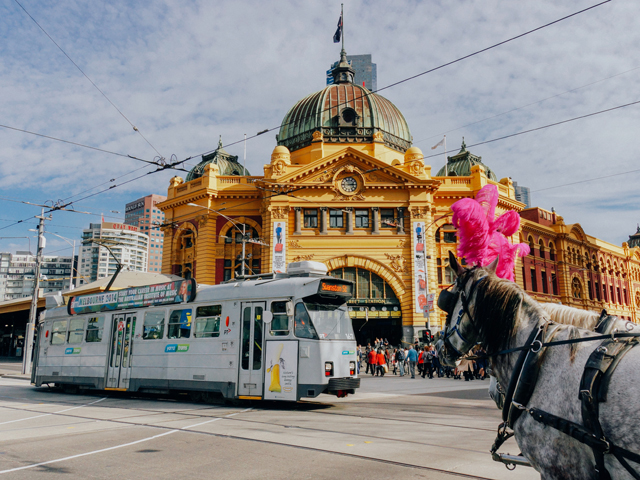Melbourne Becoming One of the Most Live-able and Sustainable Cities

Melbourne becoming one of the most live-able and sustainable cities
Melbourne is to become one of the world's top 10 most liveable and sustainable cities by 2020; per capita greenhouse gas emissions will be reduced by 35 per cent per resident and 59 per cent per worker under a target identified in Future Melbourne. Lord Mayor John So said Future Melbourne had been the most ambitious community consultation project ever undertaken by the City of Melbourne.
Around 15,000 individuals, businesses, organisations and community groups from across Melbourne and the globe have participated in the Future Melbourne consultation program.
This extensive collaboration has ensured a rich and robust Future Melbourne draft plan. In accepting this plan from the community for consideration, I wish to express our gratitude to the Reference Group members and our project partners who have committed so much time and effort to this landmark project, the Lord Mayor said.
Planning Committee Chair, Councillor Catherine Ng, said the draft plan aimed to build on Melbourne's liveability and become one of the world's top 10 most sustainable cities. Future Melbourne is the community of Melbourne's long-term plan for the future direction of all aspects of city life. Developed by the community, it sets out the goals for the future, key trends and challenges, and outlines strategic growth areas for the city, Cr Ng said.
Future Melbourne sets out six goals:
1. A city for people
2. A prosperous city
3. An eco-city
4. A knowledge city
5. A creative city
6. A connected city.
A selection of 10 headline targets have been identified to measure progress towards the six Future Melbourne goals for the municipality by 2020.
These include:
1. all visitors to and residents of the city feel welcome, safe and engaged
2. all residents, businesses and visitors easily and affordably access the internet;
3. at least 140,000 people live in the municipality of Melbourne;
4. at least 20 per cent of new housing in the municipality is affordable or social housing;
5. total employment in the municipality is more than 400,000;
6. per capita greenhouse gas emissions by 2020 have reduced by 35 per cent per resident and 59 per cent per worker from 2006 levels;
7. per capita drinking water use by 2020 has reduced by 40 per cent per resident and 50 per cent per worker compared to 2000 levels;
8. metropolitan Melbourne is ranked in the world's top research centres;
9. metropolitan Melbourne is ranked in the world's top five cities for international higher education; and
10. 90 per cent of people travel to work in the Melbourne CBD by walking, bicycle and or public transport.
Future Melbourne YGen representative, Jack Fuller, said Melbourne's youth had been keenly interested in the project. The average age of Melburnians is 28, and a third of the population are students. We have shown through our contribution to Future Melbourne that Melbourne's young adults care about how we want to live, work, play and study in the city, Mr Fuller said.
Future Melbourne began in June 2007 as a community plan sponsored by the City of Melbourne and was developed collaboratively via an ongoing open public engagement strategy. Some 15,000 individuals, businesses, organisations and community groups from across Melbourne have participated in the Future Melbourne consultation program.
Around 15,000 individuals, businesses, organisations and community groups from across Melbourne and the globe have participated in the Future Melbourne consultation program.
This extensive collaboration has ensured a rich and robust Future Melbourne draft plan. In accepting this plan from the community for consideration, I wish to express our gratitude to the Reference Group members and our project partners who have committed so much time and effort to this landmark project, the Lord Mayor said.
Planning Committee Chair, Councillor Catherine Ng, said the draft plan aimed to build on Melbourne's liveability and become one of the world's top 10 most sustainable cities. Future Melbourne is the community of Melbourne's long-term plan for the future direction of all aspects of city life. Developed by the community, it sets out the goals for the future, key trends and challenges, and outlines strategic growth areas for the city, Cr Ng said.
Future Melbourne sets out six goals:
1. A city for people
2. A prosperous city
3. An eco-city
4. A knowledge city
5. A creative city
6. A connected city.
A selection of 10 headline targets have been identified to measure progress towards the six Future Melbourne goals for the municipality by 2020.
These include:
1. all visitors to and residents of the city feel welcome, safe and engaged
2. all residents, businesses and visitors easily and affordably access the internet;
3. at least 140,000 people live in the municipality of Melbourne;
4. at least 20 per cent of new housing in the municipality is affordable or social housing;
5. total employment in the municipality is more than 400,000;
6. per capita greenhouse gas emissions by 2020 have reduced by 35 per cent per resident and 59 per cent per worker from 2006 levels;
7. per capita drinking water use by 2020 has reduced by 40 per cent per resident and 50 per cent per worker compared to 2000 levels;
8. metropolitan Melbourne is ranked in the world's top research centres;
9. metropolitan Melbourne is ranked in the world's top five cities for international higher education; and
10. 90 per cent of people travel to work in the Melbourne CBD by walking, bicycle and or public transport.
Future Melbourne YGen representative, Jack Fuller, said Melbourne's youth had been keenly interested in the project. The average age of Melburnians is 28, and a third of the population are students. We have shown through our contribution to Future Melbourne that Melbourne's young adults care about how we want to live, work, play and study in the city, Mr Fuller said.
Future Melbourne began in June 2007 as a community plan sponsored by the City of Melbourne and was developed collaboratively via an ongoing open public engagement strategy. Some 15,000 individuals, businesses, organisations and community groups from across Melbourne have participated in the Future Melbourne consultation program.
MORE
- Clean Up Australia Day
- Brioche Installs Solar Air-Con
- Acting for a Sustainable Future
- Melbourne's Own Solar Powered Charging Station...
- Battery Hazard
- Q.CELLS Completes Europe's Largest Solar Project
- First Cyclone-Proof Solar Modules in Australia
- TEC's Waste Not
- Solar Charging Station for Electric Vehicles
- Globe recycling program





